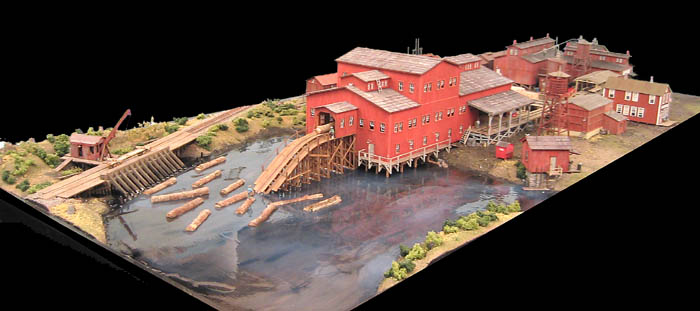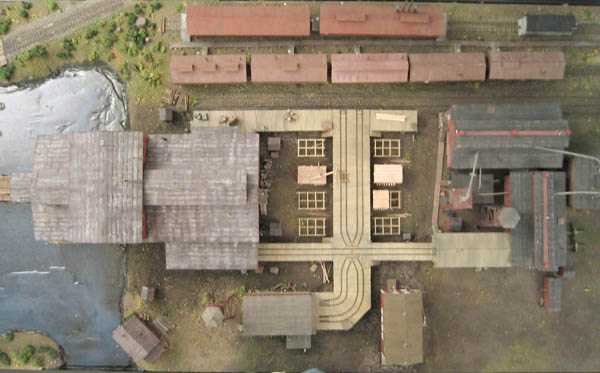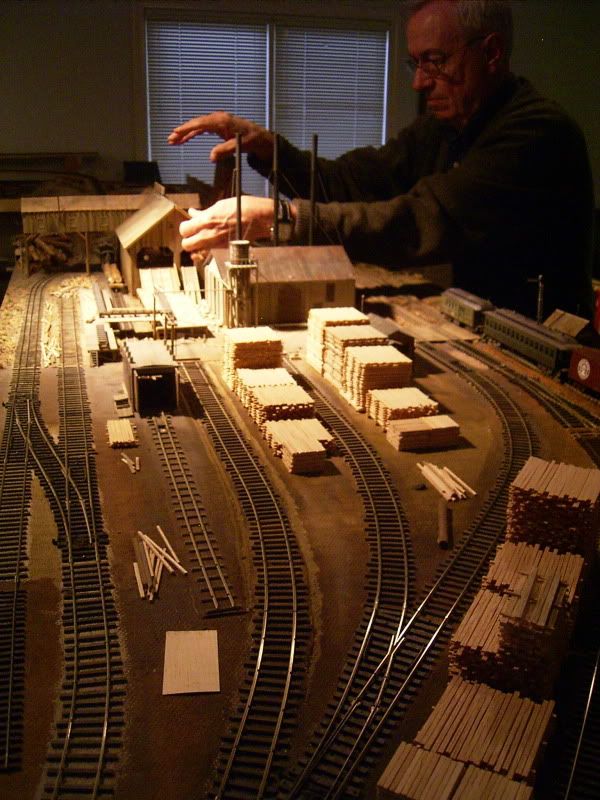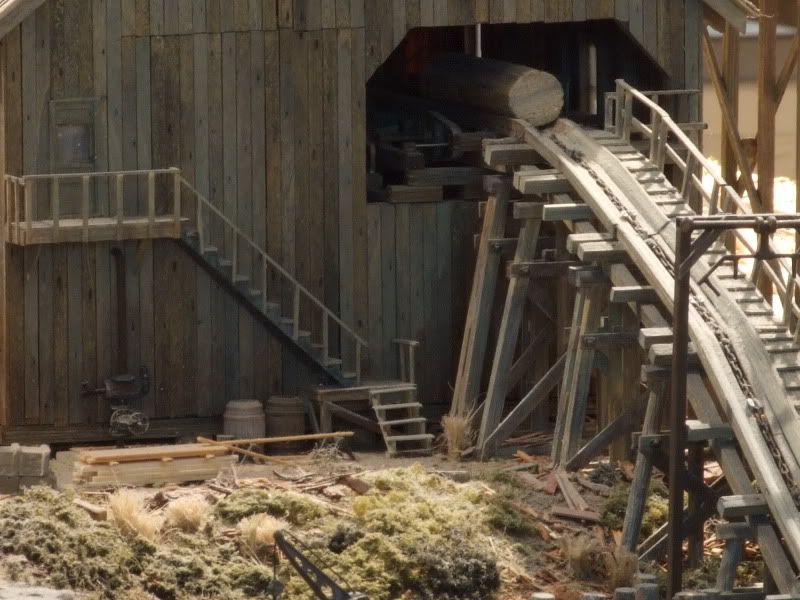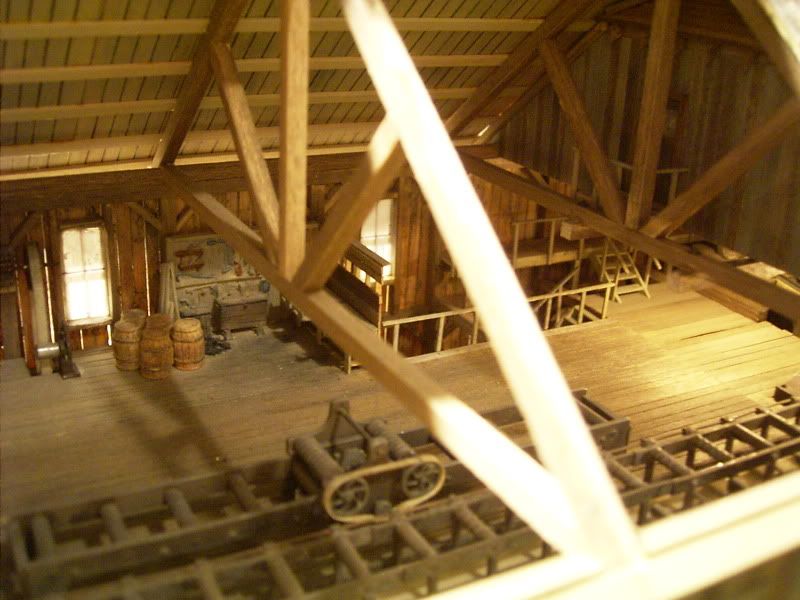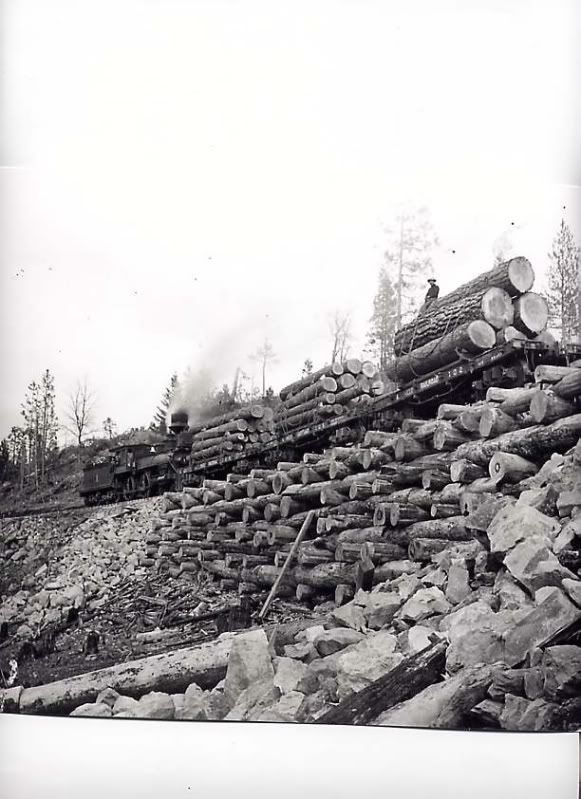Reference material on lumber mills-- (mostly in print)
Carter Lumber Co. office at Camden/later U.S Plywood_RMC_ Dec71 p.35
Crane, overhead for handling logs, Mod RRer Aug66 p.29
Fire hose shed for lumber mill, pix,plans RMC Oct95 p.80
Gerlinger carriers used by lumber industry, manufactured Dallas Business Week Aug 20, 1955 p.104
Kirby Lumber Co Silbee mills Santa Fe Modeler 2Q87 p.8-11
loads, pole for N scale Model Railroader Apr04 p.86
log decks NMRA Bull Aug83 p.26
Log dump, model animation Mod RRer Nov93 p.92
Log loading boom w electronmagnet Mod RRer Nov93 p.92
Log pile at PFI Mill, East Lewiston, Idaho ModRRer Feb98 p.78
log pond at St.Regis Paper Co., Tacoma Washington with "floating bulldozer’ boat handling logs BusinessWeek Aug4,1956 p.42
Log skidder “Big Wheel” in N from O scale popcorn wagon wheels, plans, model article. N Scale SeptOct98 p.26
Log skidder “Big Wheels”, The Loggers (Time-Life Books) p.99
log truck showing method of steel strapping, ad for Acme Steel Business Week Sept 17, 1955 p.147
logging truck, crane lifting logs at rail reload Marvels of American Industry p.58
Logging camp, British Columbia, pix Mod RRer Mar90 p.104
Logging camp structures, Mod RRer July66 p.20
Logging camp, Mormon Lake, AZ
Refrigerator Cars, Ice Bunker 1884-1979 p.71
Logging figures, old time, kitbashed from modern construction workers, Mod RRer Apr88 p.110
Logs, how to model,
